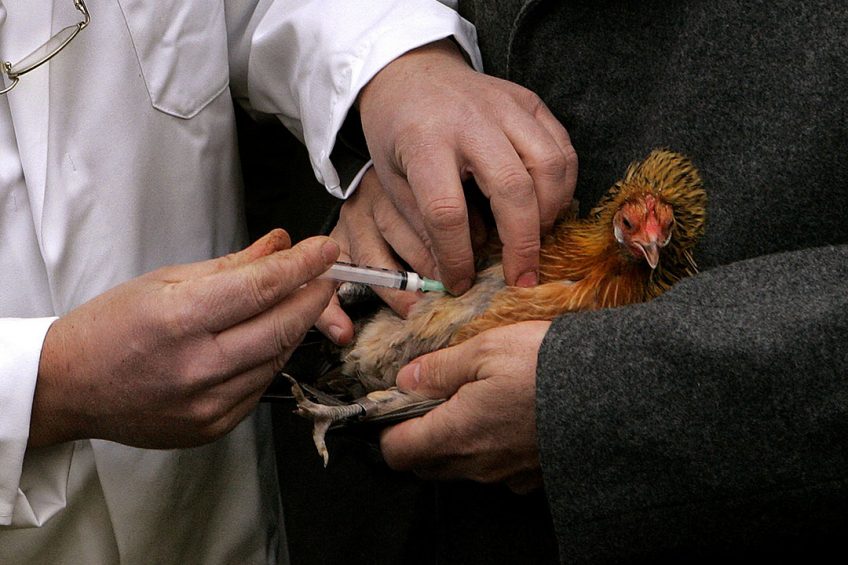Immunological and molecular characterisation of diseases

Specific microbiota in chickens under different housing conditions and disease status have been identified.
The work, highlighted in the final pan-European PROHEALTH report to the European Commission, also looked at the results of microarray analyses of samples from tissues of chickens.
The study
The objectives of the study were to use a microarray-based platform, deep sequencing and qRT-PCR and cellular analysis to monitor changes in host gene expression in poultry associated with production disease; determine association between genotypes in chicken and disease/production phenotypes and also determine the association between microbiota composition and disease/production phenotypes. Information received could then be used to suggest dietary changes and management.
A Standard Operating Procedure for the preparation of tissue and blood samples and collection of faecal samples for microbiota characterisation was developed early in the project.
Immunological, cellular and microbiological analysis studies were then performed. Immunological changes were studied in the intestine of fast growing Ross 308 and slower growing Ross Classic broilers.
The birds were experimentally infected with 2.5×103 or 7×103 oocysts of Eimeria maxima obtained at day 6 and 13 post-infection and 28 day old Ross 308 broilers naturally infected with E. maxima and E. acervulina. Tissues were provided by Newcastle University, UK.
In both studies qPCR analysis indicated an inflammatory response i9n the intestine of broilers infected with Eimeria. Gene expression indicated an active Th1 response, with significantly increased expression of T cell (CD40 ligand), IL-17, IFN-y and IFN-yR.
Scientists also measured immunological gene changes in Ross 308 broilers infected with 3 daily doses of Clostridium perfringens (5×108 CFU/ml), with tissue provided by Ghent University, Belgium. Results from this study indicated that necrotic enteritis due to C.perfringens infection inducted differential expression of 32 immune genes. These changes indicated an active Th1 response with increased expression of MHC1, cd28 and CD40L and innate immunity, with increased mannose binding lectin (opsonin) and pro-inflammatory chemokines (IL-6 and IL-8) which are chemoattractant for heterophils.
Gene expression
The study also looked at whole genomic gene expression, which was carried out at Nottingham University. In broilers, whole gene expression was measured by microarray in intestinal tissues from Ross 308 infected as above.
The results showed that 1033 genes were DE in broilers experimentally infected with E. maxima, 855 were up-regulated and 178 were down-regulated, compared to uninfected controls.
In naturally infected Ross 308, 2875 genes were DE with 1498 up-regulated and 1377 down regulated compared to non-clinical flock mates. However, it was hypothesised that the non-clinical flock mates would be sub-clinically infected. This was found to be the case and comparison of gene expression in tissue from clinical, sub-clinical and uninfected Ross308 has formed the basis of biomarker identification.
In the Ross 308 broilers infected with C. perfringens to induce necrotic enteritis (NE), 2095 genes were DE in the intestine (1241 up-regulated and 854 down-regulated) compared to uninfected controls. This work, says the report, has also led to the development of a biomarker panel which may differentiate between coccidiosis and NE.
Microbiota characterisation
Illuminseq high through-put sequence analyses of the variable (V3/V4) region of the 16s rRNA genes which were contained within the bacterial microbiota were performed. A comparison of the contigs produced with known reference sequences was then used to identify the bacterial species and any operational taxonomic units which were present in the faecal or caecal samples.
48 newly hatched ISA Brown males of the egg laying chicken line were divided into 2 groups. Group one received a standard diet and group two received a standard feed supplemented with liposoluble phenolic acid extract from Curcuma and hydrosoluble extract from Scutellaria. The supplemented diets were provided from day one. 7 days later half of the chickens in each group were infected with 1 x 107cfu S. Enteritidis 147 spontaneously resistant to nalidixic acid.
Infection with S.Enteritidis affected microbiota composition at day 4 post infection, ie in 11 day old birds. A significantly higher abundance of Escherichia coli and Clostridium XI occurred at the expense of Clostridium XIVa and Lachnospiracea incertae sedis which were lowered in S.Enteritidis infected chickens compared to uninfected controls.
However, the combined effect of both S.Enteritidis and plant extract supplementation resulted in the most extensive changes in microbiota composition, both at 4 and 14 days post-infection. Microbiota of S.Enteritidis infected chickens fed a diet with plant extracts was characteristic with significantly increased levels of Lachnospiracea incertae sedis, Clostridium XI, Blautia, Flavonifractor, Coprococcus, Clostridium IV, Lactobacillus and Faecalibacterium, and a decreased abundance of Clostridium XIVa in comparison to microbiota of the uninfected chickens.
Lactobacillus and Facealibacterium are both considered to have a positive effect on gut health.












